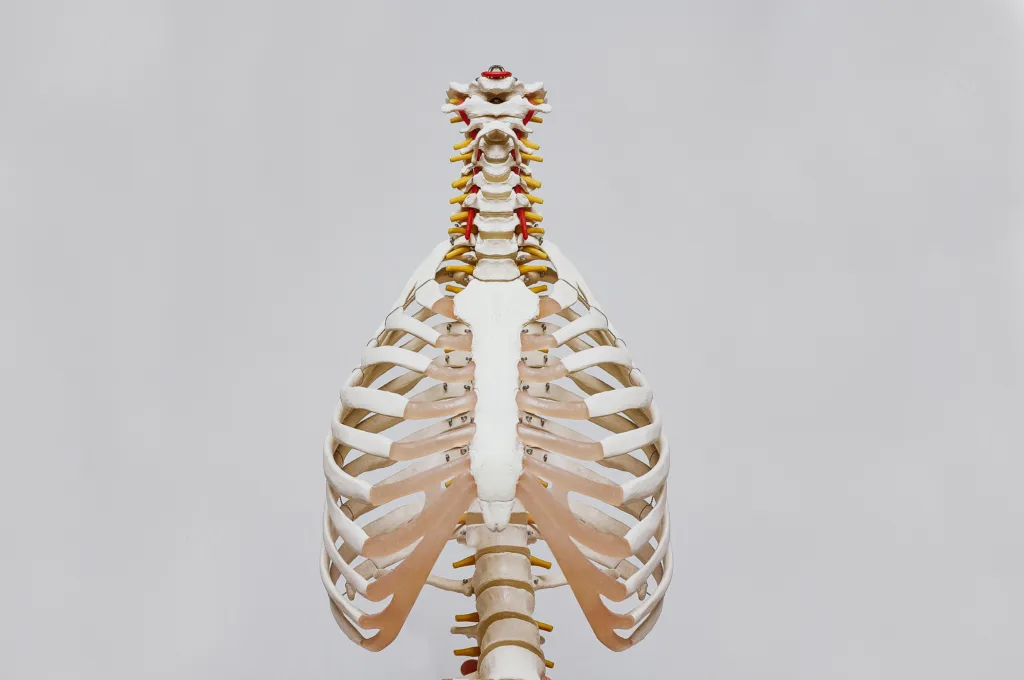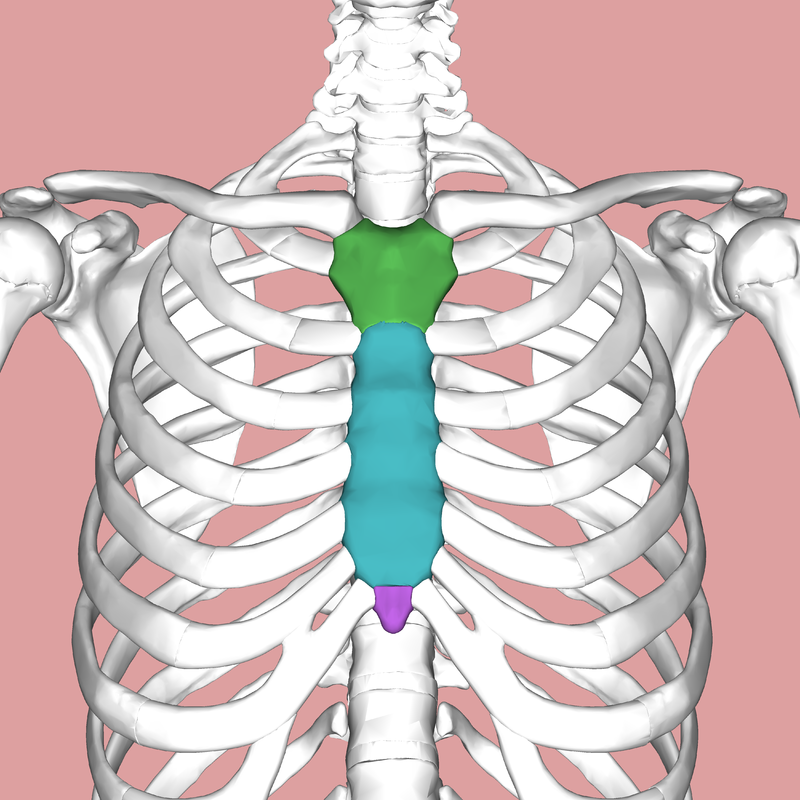The human ribcage is a complex structure that provides protection for the vital organs of the chest and supports the respiratory system. The ribcage consists of twelve pairs of ribs, and each rib articulates with two adjacent vertebrae at the back and the sternum at the front. However, not all pairs of ribs articulate directly with the sternum.
The frst seven pairs of ribs are known as true ribs because they articulate directly with the sternum through their costal cartilages. The costal cartilage from each of these ribs attaches directly to the sternum, and they are classified as vertebrosternal ribs. The true ribs are essential for the structural stability of the ribcage, as they form a rigid framework that protects the heart, lungs, and other organs in the chest.
The following three pairs of ribs, ribs 8 to 10, are known as false ribs. They are called false ribs because their costal cartilages do not attach directly to the sternum. Instead, they connect to the seventh costal cartilage through the costochondral joint. The false ribs are classified as vertebrochondral ribs.
The last two pairs of ribs, ribs 11 and 12, are known as floating ribs. They are called floating ribs because they do not articulate with the sternum at all. Instead, they are only attached to the vertebrae at the back. The floating ribs are classified as vertebral ribs.
The articulation of the ribs with the sternum is crucial for the stability of the chest and the respiratory system. The true ribs provide the primary support for the ribcage, while the false ribs and floating ribs contribute to the flexibility of the thorax. The costal cartilages also play a vital role in the movement of the ribcage during breathing.
There are twelve pairs of ribs in the human ribcage, but only the first seven pairs articulate directly with the sternum. The remaining pairs of ribs either connect indirectly to the sternum or do not articulate with it at all. The classification of the ribs based on their articulation with the sternum is essential for understanding the structure and function of the ribcage.
Number of Ribs Articulating with the Sternum
The sternum articulates with a total of seven ribs, also knwn as the true ribs. These ribs are connected to the sternum by their costal cartilages, which allow for movement and flexibility of the ribcage during breathing. It is important to note that the remaining five ribs, known as false ribs, do not directly articulate with the sternum. Instead, they are connected to the true ribs or the spine. Understanding the anatomy and function of the ribs is crucial for medical professionals, as it can aid in the diagnosis and treatment of various conditions affecting the chest and respiratory system.

Directly Connected Rib Pairs to the Sternum
The human ribcage is made up of 12 pairs of ribs. The first sven pairs of ribs, also known as the vertebral ribs, are classified as true ribs because they connect directly to the sternum via their costal cartilage. This type of connection is called a vertebralsternal connection. The remaining five pairs of ribs, referred to as false ribs, are not attached directly to the sternum but instead connect via the costal cartilage of the rib above them. The eighth to tenth pairs of ribs are called the vertebrochondral ribs, and their costal cartilage attaches indirectly to the sternum. The eleventh and twelfth pairs of ribs are known as the vertebral or floating ribs, and they do not attach to the sternum at all.
To summarize, the first seven pairs of ribs connect directly to the sternum, while the remaining five pairs of ribs do not attach directly to the sternum.
Do Ribs Articulate Directly With the Sternum?
Not all ribs articulate directly with the sternum. The sternum, also known as the breastbone, is the flat bone located in the center of the chest that connects the rib bones. The human ribcage consists of 12 pairs of ribs, and each rib attaches to the thoracic vertebrae (the bones of the spine) at the back of the chest. However, only the first seven pairs of ribs connect directly to the sternum through cartilaginous attachments called costal cartilages. These ribs are known as true ribs. The remaining five pairs of ribs are known as false ribs, and only the upper three pairs (8-10) indirectly connect to the sternum through their costal cartilages, while the last two pairs (11-12) are considered floating ribs and do not attach to the sternum at all.
Do Ribs 11 and 12 Attach to the Sternum?
Ribs 11 and 12 are the last two pairs of ribs in the human ribcage. These ribs are also known as floating ribs because they do not attach directly to the sternum or the breastbone, unlike the other ribs. Instead, they are attached to the vertebrae in the back, and ther anterior ends are free. This is because the costal cartilages of ribs 11 and 12 do not reach the sternum or attach to any other rib cartilage, but rather end in the muscles of the abdominal wall. Therefore, the floating ribs are not directly involved in the respiratory movements of the ribcage, unlike the true and false ribs. It is important to note that the attachment of ribs to the spine is crucial for the structural stability of the ribcage, and any injury or damage to the ribs can cause severe pain and discomfort.

Conclusion
The pairs of ribs in the human body can be classified into three categories: true ribs, false ribs, and floating ribs. The true ribs, which are the first seven ribs, are directly attached to the sternum though their costal cartilages. The false ribs, which include ribs 8-10, are indirectly attached to the sternum through the costal cartilage of the seventh rib. the floating ribs, ribs 11 and 12, do not attach to the sternum at all. Understanding the differences between these types of ribs is important for medical professionals and individuals seeking to learn more about the anatomy and structure of the human body.
